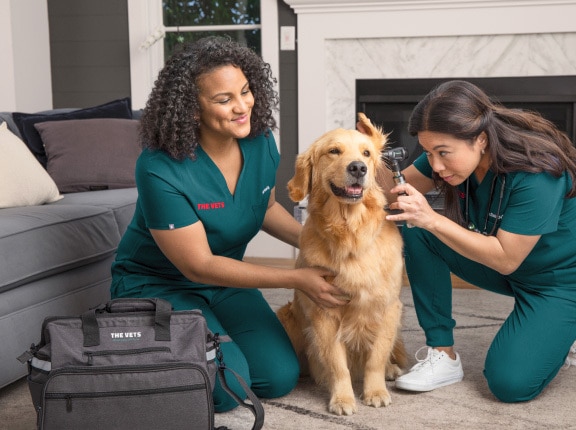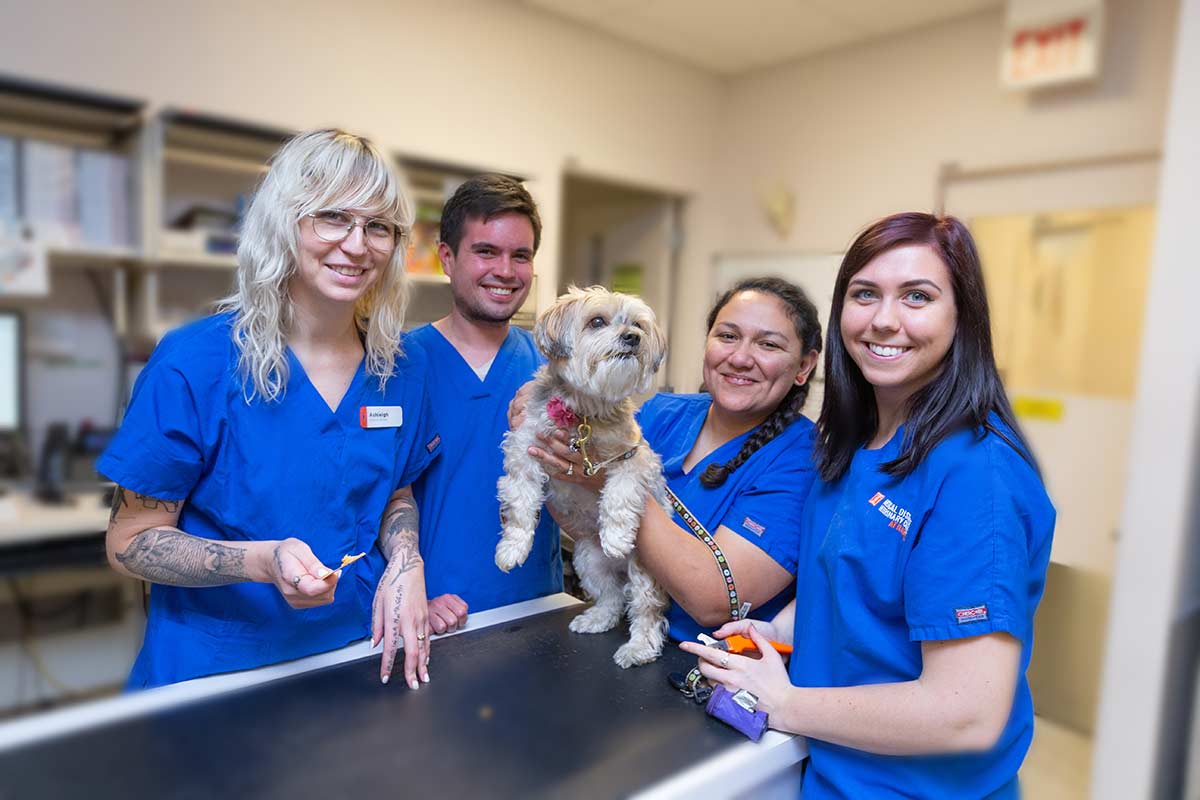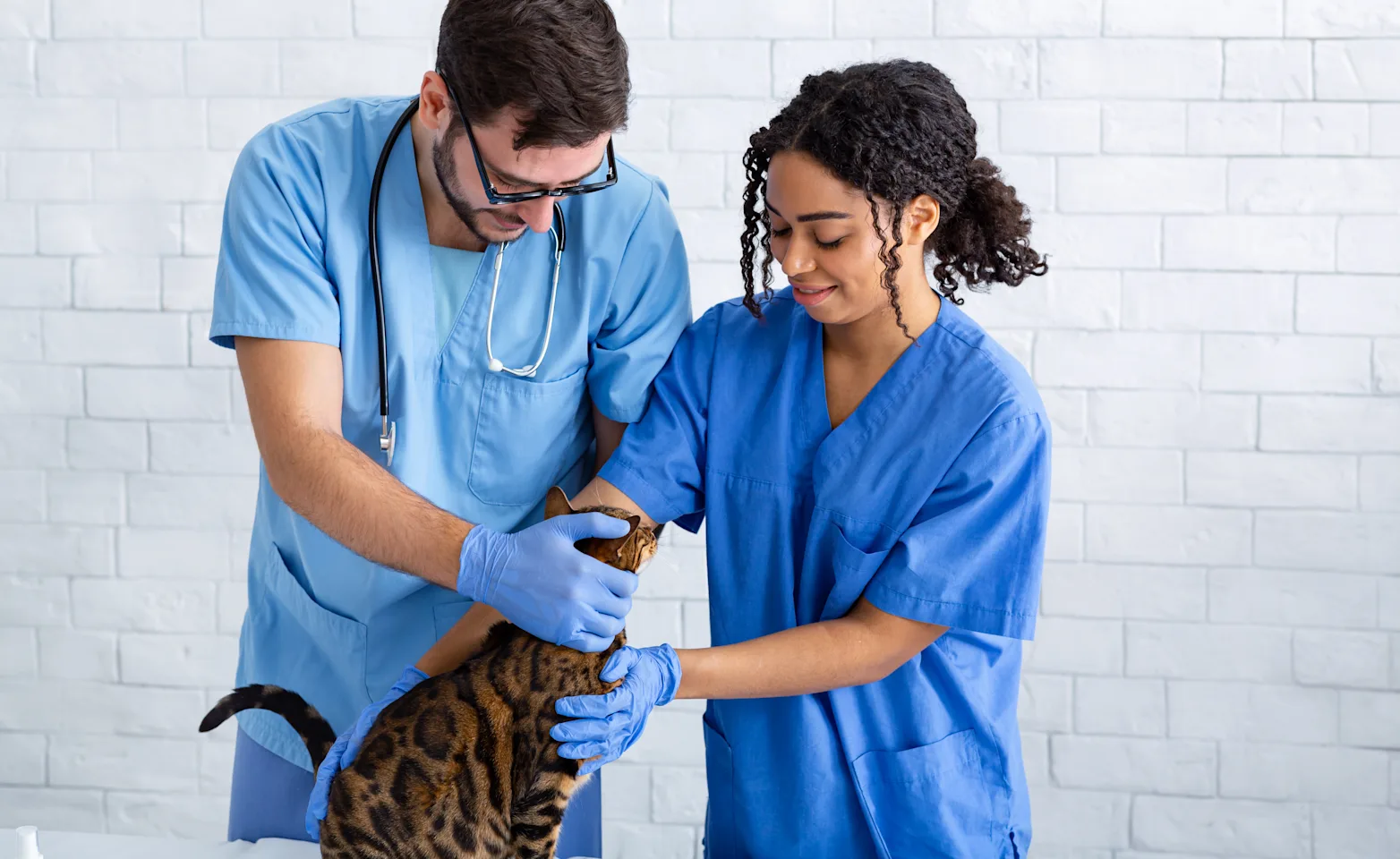Why Pet Rehabilitation Is Vital: the Advantages of Vet Providers for Your Animal's Recovery
Pet recovery is a crucial element of recovery for pet dogs dealing with injuries or disabilities. Veterinary solutions provide vital support through tailored rehabilitation plans that deal with specific requirements. These plans usually consist of discomfort administration, physical treatment, and dietary guidance. Recognizing the various elements of pet rehab can illuminate its significance in improving healing results. What certain benefits do these services offer, and just how can they change an animal's recovery journey?
Comprehending Animal Rehab
Animal rehabilitation encompasses a series of therapeutic techniques aimed at recovering the wellness and capability of injured or handicapped animals. This area integrates various strategies, consisting of physical therapy, hydrotherapy, and job-related treatment, customized to satisfy the certain requirements of each animal. Rehabilitation specialists examine a pet's condition, establishing personalized therapy plans that might include workouts to reinforce muscles, improve movement, and enhance total well-being. The process not just concentrates on physical healing yet also addresses psychological and behavioral aspects. Animals usually experience anxiety and stress and anxiety adhering to an injury, making mental health considerations vital in recovery. By producing an encouraging atmosphere, therapists can aid pets regain their confidence and adjust to their brand-new scenarios. Through normal sessions, pets can experience considerable renovations, eventually leading to a better high quality of life. On the whole, understanding pet rehab highlights its value in promoting healing and improving the bond between pets and their owners.
The Role of Pain Monitoring in Healing
How important is reliable discomfort administration in the healing of injured animals? It plays an essential role in promoting recovery and boosting the general health of pet dogs. Correct discomfort monitoring not only eases pain yet additionally advertises wheelchair, making it possible for pets to join rehab activities required for recovery. When discomfort is properly managed, pets often tend to react favorably to treatment, leading to quicker rehabilitation outcomes.Veterinarians utilize numerous approaches to assess and address pain, consisting of drugs, acupuncture, and alternative treatments. By customizing pain administration approaches to the specific demands of each animal, vets can guarantee that animals continue to be calm and cooperative throughout their recuperation journey. Lessening discomfort aids lower stress, which can prevent healing and prolong recuperation times. To summarize, reliable pain administration is important for enhancing the healing process and boosting the lifestyle for hurt animals.
Physical Treatment Methods for Pets
Countless physical therapy techniques are readily available to help in the rehabilitation of animals recovering from injuries or surgical procedures (24 hour vet near me). These techniques can enhance movement, ease discomfort, and promote healing. Healing exercises, as an example, help reinforce muscular tissues and enhance joint feature, allowing family pets to restore their physical capabilities slowly. Hand-operated therapy, which includes massage therapy and mobilization, can minimize tension and enhance flow, contributing to a quicker recovery.Other strategies such as passive range of motion workouts urge joint adaptability and decrease rigidity. Furthermore, electric excitement therapy may be used to promote nerves and muscles, advertising healing and pain relief.Veterinary professionals usually tailor these techniques per pet dog's particular demands, making sure a detailed rehab plan. By executing these physical treatment techniques, pet dogs can experience better lifestyle and a more effective recovery from their disorders. The integration of these methods into recovery programs is essential for perfect recuperation results
Advantages of Hydrotherapy for Recovery
Hydrotherapy supplies substantial benefits in pet rehabilitation, especially in improving movement. This water-based therapy promotes pain relief while giving convenience to harmed or recovering family pets. In addition, it helps with strength-building workouts that add to overall physical recovery.
Boosted Movement Renovation
As pets recuperate from injuries or surgical procedures, boosted flexibility typically ends up being a key objective of their recovery. Hydrotherapy acts as a valuable tool in achieving this purpose. With water-based exercises, animals can take part in low-impact movements that facilitate joint movement and enhance muscles without the tension of weight-bearing tasks. The buoyancy of water sustains their bodies, permitting boosted series of motion and mobility improvement. In addition, hydrotherapy encourages much better equilibrium and control, which are vital for restoring typical motion patterns. Regular sessions can cause significant progress in a pet's physical capabilities, inevitably boosting their lifestyle. This approach not just aids in recuperation but likewise promotes a more active and satisfying lifestyle post-rehabilitation.
Discomfort Alleviation and Comfort

Remedy for discomfort is a crucial element of animal rehabilitation, and hydrotherapy considerably adds to this process. By making use of water's buoyancy, hydrotherapy reduces joint stress and anxiety and reduces pain throughout movement. This healing method gives a calming atmosphere where animals can engage in gentle exercises without the complete weight of their bodies affecting their recuperation. The cozy water stimulates blood flow, promoting healing while also motivating leisure. Furthermore, hydrotherapy sessions can be customized to satisfy the details requirements of the animal, guaranteeing ideal convenience. As pets experience decreased pain and enhanced comfort levels, their overall willingness to take part in recovery activities frequently improves, leading to a much more efficient recuperation journey. Consequently, hydrotherapy works as a crucial device in boosting discomfort alleviation and convenience during rehab.
Toughness Structure Workouts
Strength-building workouts play an important function in the rehabilitation process, with hydrotherapy offering special benefits. This form of therapy utilizes water resistance to boost muscular tissue strength without placing extreme strain on the joints. The buoyancy of water sustains the pet's weight, permitting safer movement and raised series of motion. In addition, hydrotherapy can boost cardiovascular wellness and advertise total fitness, helping in faster recovery from injuries or surgeries. The regulated setting also lessens the risk of reinjury, making it a perfect option for pets needing rehabilitation. Routine hydrotherapy sessions can bring about obvious enhancements in movement, toughness, and endurance, inevitably improving the family pet's top quality of life and ability to go back to normal activities.
Value of Personalized Rehabilitation Strategies
Personalized rehab strategies are necessary for addressing the unique needs of each pet, ensuring individualized therapy methods. These plans enable effective development tracking and required modifications, fostering ideal recuperation results. Additionally, an alternative technique can improve the overall health of the pet, advertising a more thorough rehab experience.
Individualized Therapy Approaches
While lots of rehabilitation programs embrace a one-size-fits-all approach, the one-of-a-kind demands of each animal necessitate personalized treatment strategies for ideal healing. Custom-made rehabilitation plans consider different aspects, including the pet's types, age, clinical background, and specific injuries or problems. By tailoring interventions, vets can deal with each pet's unique challenges, making the most of the effectiveness of the rehab process. Embellished strategies might include different techniques such as physical therapy, hydrotherapy, and therapeutic workouts, guaranteeing that the treatment aligns with the pet's capacities and progress. Furthermore, tailored strategies foster a stronger bond between the pet and the caregiver, promoting an extra appealing and encouraging healing environment. Ultimately, individualized treatment is crucial for attaining best feasible results in animal rehab.
Progression Tracking and Adjustments

Holistic Recovery Methods
All natural recuperation approaches are essential for effective animal rehab, as they emphasize the importance of personalized therapy plans customized to each animal's certain needs. This technique considers the physical, emotional, and environmental aspects impacting recovery. Personalized rehab plans may consist of a mix of physical treatment, dietary therapy, and behavior adjustments. By addressing these diverse aspects, vets can boost the total health of the animal and promote a much faster healing. Such customized strategies facilitate a deeper understanding of the pet's one-of-a-kind challenges, leading to a lot more efficient treatments. Eventually, alternative recovery techniques not what degree does a vet need only boost physical wellness but additionally contribute to the animal's mental and emotional stability, ensuring a complete recovery experience.
The Effect of Nourishment on Recuperation
Nutrition plays a necessary role in the healing procedure for rehabilitating pets, frequently identifying the speed and performance of recovery. A well-balanced diet regimen offers the essential nutrients that sustain tissue repair, enhance the body immune system, and enhance general vitality. Protein is specifically essential, as it assists in muscle rebuilding and recuperation from injuries. Essential fatty acids, vitamins, and minerals also add to minimizing inflammation and promoting ideal mobile function.Veterinarians regularly highlight the value of tailored nutrition plans, considering each animal's particular demands, age, and health and wellness standing. Correct hydration is just as essential, as fluids assist in vitamins and mineral absorption and assistance in cleansing. By guaranteeing that family pets receive suitable nutrition, caregivers can greatly improve their possibilities of a successful healing, resulting in far better long-term health and wellness outcomes. Eventually, nourishment offers as a foundational element in the rehab journey, sustaining pets in restoring toughness and resilience post-injury or health problem.
Success Stories: Family Pets That Flourished After Rehab
Effective rehab stories are plentiful, showcasing the strength of pet dogs who have gotten rid of considerable challenges. Take, as an website link example, Bella, a gold retriever who experienced severe injuries from a cars and truck accident. With dedicated veterinary care and a comprehensive rehab program, she reclaimed her flexibility and went back to her lively self, much to her proprietor's delight. Likewise, Max, an elderly feline detected with joint inflammation, experienced remarkable renovation through a combination of physical treatment and discomfort monitoring. His newfound agility permitted him to enjoy his favored sunbathing spots once more. One more inspiring case is that of Coco, a rescued greyhound that got over stress and anxiety through habits alteration and socialization techniques, enabling her to prosper in her brand-new home. These success stories exhibit the transformative power of pet recovery, emphasizing that with the right support, pet dogs can not only recoup yet lead satisfying lives, enhancing the bonds they show their family members.
Frequently Asked Inquiries
How much time Does the Rehabilitation Refine Typically Take for Pet Dogs?
The recovery procedure for pets generally varies based upon the injury or problem, ranging from a couple of weeks to numerous months. Private progression, treatment kind, and commitment to exercises considerably influence the overall duration of healing.
Are There Any Kind Of Threats Related To Pet Recovery?
Pet rehab may lug dangers such as worsening of injuries, inappropriate techniques causing discomfort, or not enough surveillance throughout recovery. These aspects can hinder development and influence the general efficiency of the recovery procedure.

Can All Pets Take Advantage Of Recovery Providers?
Not all pet dogs might call for recovery, but lots of can benefit greatly. Recovery solutions can enhance movement, reduce pain, and enhance general health, especially for those recouping from injuries, surgical treatments, or chronic conditions.
How Can I Prepare My Pet Dog for Recovery Procedure?

What Signs Indicate My Pet Dog Demands Recovery?
Indicators indicating a pet may need rehabilitation consist of difficulty strolling, limping, decreased task degrees, unwillingness to jump, or indications of discomfort. Observing these behaviors can prompt owners to look for expert evaluation and therapy for their pets.